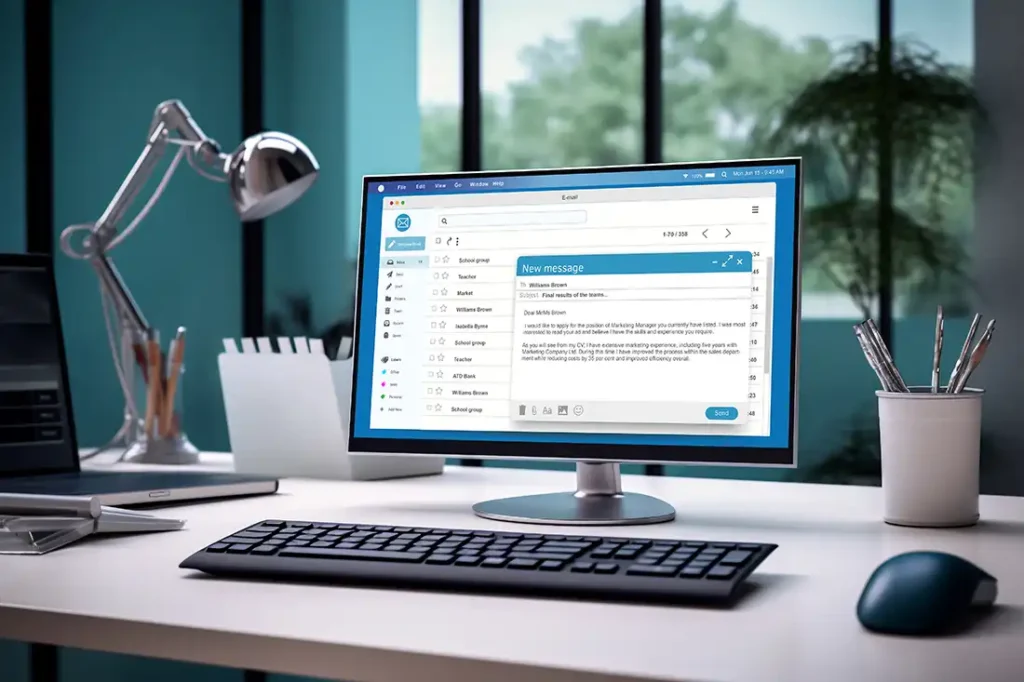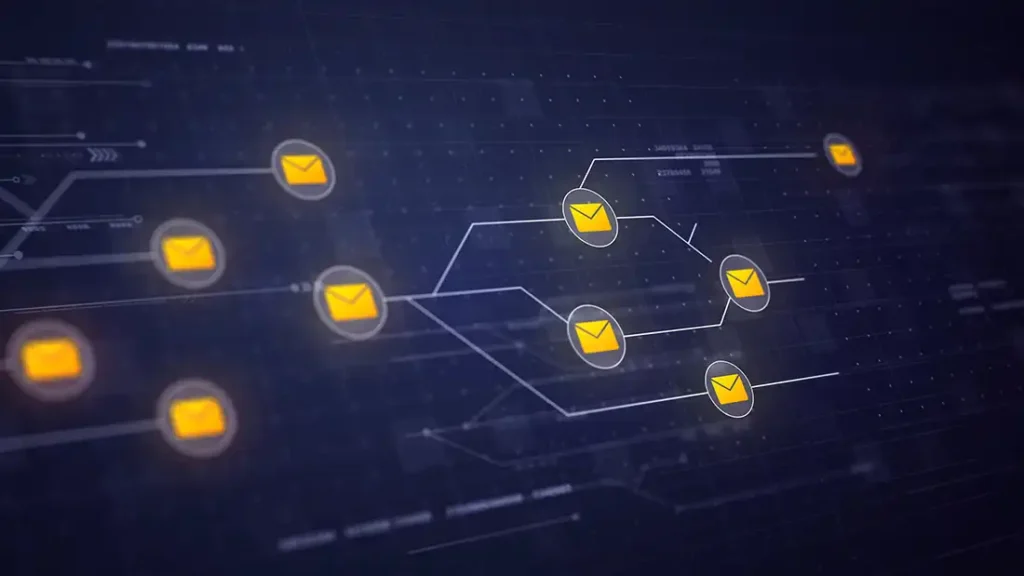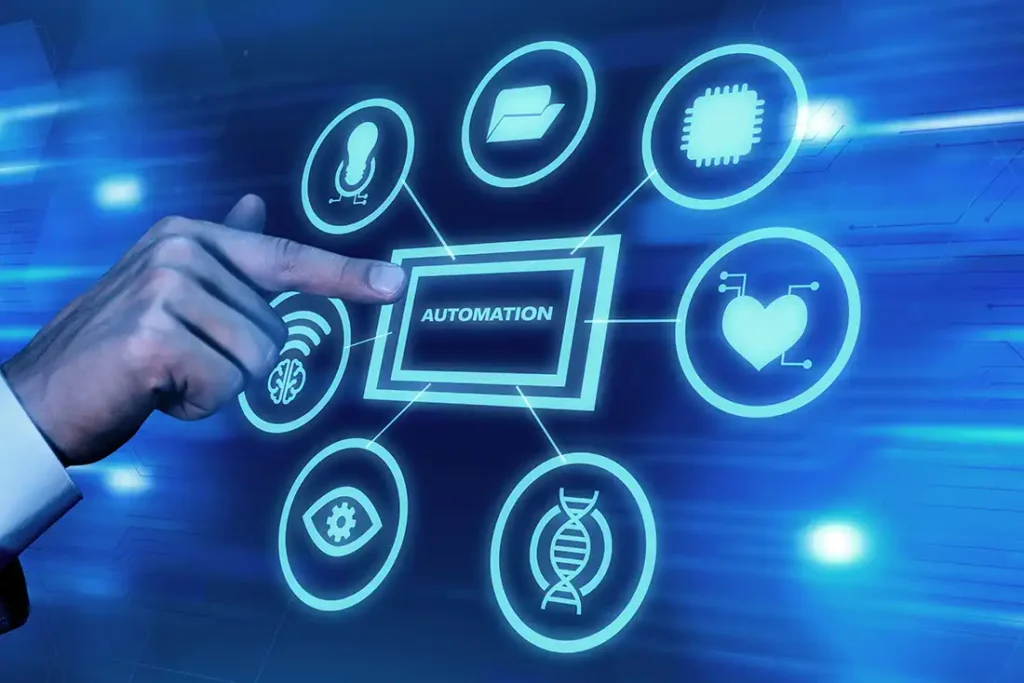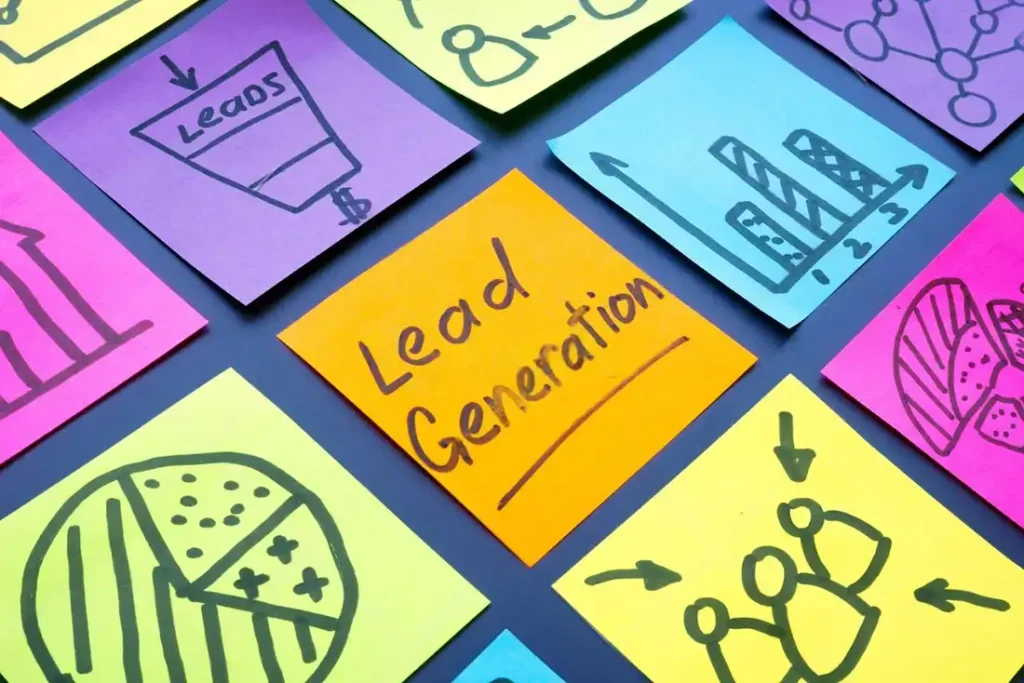Email marketing just hit its stride in 2025. The numbers are incredible. You can now expect $36 to $42 back for every dollar you spend on email campaigns. That’s better than almost any other marketing channel.
But here’s the catch. The rules changed completely. What worked last year might get your emails blocked today. New authentication requirements are mandatory. Privacy laws got stricter. And your audience expects way more personalization.
The good news? AI tools are making everything easier. You can now create personalized campaigns for thousands of people in minutes. Interactive content is converting 40% better than old-school PDFs. And mobile optimization isn’t optional anymore – it’s survival.
This research reveals exactly what’s working right now. We’ll cover the latest performance stats, compliance requirements, and AI-powered strategies that are delivering real results for businesses of all sizes.
Email marketing delivers amazing returns – expect $36+ back for every dollar you spend when done right.
Email authentication is now required – set up SPF, DKIM, and DMARC or your emails won’t get delivered.
AI makes everything easier – automated sequences and personalization tools dramatically boost results.
Mobile-first design is essential – most people read emails on their phones, so optimize for small screens.
Privacy laws have real consequences – follow GDPR rules or face expensive fines.
Interactive content converts better – quizzes and calculators work much better than PDFs.
Focus on engagement over list size – a small, active list beats a huge, unengaged one every time.

Email marketing metrics improved across the board in 2025. Average open rates hit 42.35%, which is way higher than previous years. But there’s a big reason for this jump – Apple’s privacy changes are inflating the numbers.
Click-through rates tell the real story. They’re sitting at about 2% across all industries. That might sound low, but it’s actually solid. The best performing industries like media and government see click rates over 4%.
Conversion rates are where email really shines. Most campaigns convert between 2-5% of recipients into customers. Automated email sequences perform even better, often hitting 3% or higher.
The ROI numbers are what really matter though. Companies consistently report $36-42 return on every marketing dollar spent. Some ecommerce brands using advanced automation see returns as high as $68 per dollar invested.
B2B emails outperform B2C across most metrics. B2B open rates average 41.7% compared to 19.7% for consumer brands. This makes sense because business emails tend to be more targeted and relevant.
Mobile usage continues to dominate. About 55-60% of all emails get opened on phones. This number jumps to 70% during holiday shopping seasons. If your emails don’t look great on mobile, you’re losing more than half your audience.

The biggest change in email marketing happened in early 2025. Gmail, Yahoo, and Microsoft all implemented strict new requirements for bulk senders. If you send more than 5,000 emails per day, you must have proper authentication set up.
Here’s what’s now mandatory:
Microsoft Outlook joined the party in May 2025 with even stricter rules. They’re rejecting emails that don’t meet authentication standards. No more “noreply” email addresses – every email must have a functional reply address.
The good news is most major email platforms handle this automatically now. But you need to check your settings. Companies that ignored these changes saw deliverability drop by 20-30%.
Spam filters got smarter too. They’re using AI to analyze recipient behavior patterns. Low engagement emails get filtered more aggressively. This means list quality matters more than list size.
Your sender reputation affects everything. Keep spam complaints below 0.1% if possible. Clean your email list regularly. Remove people who haven’t engaged in 6+ months.

53% of marketers now use AI for email personalization. The technology finally works well enough to trust with customer communications. AI can write subject lines, suggest send times, and even create entire email campaigns.
The best email platforms integrated AI throughout their systems. HubSpot’s Breeze AI creates email content from simple prompts. Klaviyo’s AI predicts which products each customer wants to see. ActiveCampaign uses machine learning to optimize send times for each individual subscriber.
Automated email sequences generate 30x more revenue per recipient than one-time broadcast campaigns. The key is setting up behavioral triggers. When someone abandons their cart, views a product, or hasn’t engaged in a while – that triggers a personalized email sequence.
Welcome email series work incredibly well. They get 57.8% open rates on average. That’s double the performance of regular campaigns. Set up a 3-4 email welcome sequence for every new subscriber.
AI-powered segmentation is getting sophisticated. Instead of basic demographics, you can now segment by behavior patterns, predicted lifetime value, and purchase intent. This level of targeting wasn’t possible even two years ago.
Product recommendation engines are becoming standard. They analyze browsing history, past purchases, and similar customer patterns to suggest relevant products. Amazon-style recommendations now drive 35% of sales for ecommerce brands using them.

The platform landscape shifted significantly in 2025. HubSpot leads for all-in-one solutions with their new Breeze AI platform. It’s especially strong for B2B companies that need integrated CRM and marketing automation.
Klaviyo dominates ecommerce with the best AI features for online stores. Their predictive analytics can forecast customer lifetime value and churn risk. The AI email builder creates branded content from simple text prompts.
ActiveCampaign offers the best automation workflows without enterprise pricing. They have 750+ pre-built automation templates and advanced behavioral triggers. It’s perfect for businesses that want sophisticated marketing without complexity.
For smaller businesses, Brevo (formerly Sendinblue) provides great value at $9/month. Their AI assistant helps with subject lines and content creation. MailerLite offers excellent design tools and clean interfaces for newsletter creators.
The key is matching features to your needs. Ecommerce brands should prioritize product recommendation engines. B2B companies need lead scoring and sales integration. Content creators want simple design tools and audience growth features.
All major platforms now include:

50-60% of emails get opened on mobile devices. During busy shopping seasons, that number jumps to 70%. Mobile isn’t just important – it’s how most people read email now.
Your emails must use single-column layouts. Multi-column designs break on small screens. Minimum font size is 14px for body text and 22px for headers. Anything smaller is hard to read on phones.
Keep email width under 550 pixels. This ensures proper display across all devices. Touch-friendly buttons are essential. Make them big enough for thumbs to tap easily.
Left-align all text. It’s easier to read when people zoom in on mobile screens. Use high contrast colors so text stands out clearly. Add alt text to every image in case they don’t load.
AMP emails are gaining popularity because they let readers interact without leaving their inbox. You can add image carousels, forms, and even shopping carts. They convert 3x better than regular HTML emails.
Test every email on multiple devices before sending. What looks great on desktop might be unreadable on mobile. 70% of people delete emails that don’t display properly on their phone.

GDPR enforcement intensified dramatically in 2025. Total fines reached €5.88 billion, with Spain leading at 932 individual penalties. Email marketing violations are getting expensive fast.
Wind Tre got fined €16.7 million for sending promotional emails without proper consent. Vodafone Italia paid €12.25 million for using customer data inappropriately. These aren’t small businesses – these are major companies with legal teams.
The rules are straightforward but strict:
Double opt-in is becoming the standard, especially for European audiences. Germany requires it by law. Other countries strongly recommend it. The extra step reduces your list size but dramatically improves engagement.
Cookie consent got stricter too. You can’t use marketing cookies until people explicitly agree. No legitimate interest arguments for marketing purposes. Analytics and advertising cookies need clear consent.
CCPA and state privacy laws are expanding in the US. California raised the threshold to $25.6 million in revenue, but more states are passing similar laws. Add “Do Not Sell My Information” links to emails for California residents.
The safest approach is treating all subscribers like they’re covered by the strictest privacy laws. It’s simpler than trying to track different requirements by location.

Keep them under 30 characters for best results. This ensures full visibility on mobile devices where most people read email.
But go beyond just adding first names. Use location, recent purchases, or browsing behavior. “Sarah, your Chicago weather report” works better than “Sarah, here’s your report.”
Questions outperform statements by about 10%. People are naturally curious and want to find answers. “Are you making these email mistakes?” gets more clicks than “Common email mistakes to avoid.”
“5 ways to double your conversions” performs better than “Ways to improve conversions.” Odd numbers often work better than even numbers.
Urgency and scarcity work when used sparingly. “Last chance: 24 hours left” can increase opens by 22%. But overuse this tactic and people tune out quickly.
Instead of “Buy now” try “Get yours today.” Replace “Free” with “Complimentary” or “No cost.” Skip excessive punctuation and ALL CAPS text.
Test different approaches with your specific audience. What works for B2B might flop for ecommerce. A/B test one element at a time to understand what your subscribers prefer.

Interactive quizzes are crushing traditional lead magnets. They convert at 40-50% compared to 20-25% for PDFs and eBooks. People love personalized results and are willing to share information to get them.
AI-powered calculators work incredibly well for B2B audiences. ROI calculators, pricing tools, and savings estimators provide immediate personalized value. They also naturally qualify leads by collecting specific business information.
Video content is becoming the preferred format. Product demos, tutorial series, and expert interviews perform better than written content. They’re more engaging and easier to consume on mobile devices.
Traditional formats still work when updated for 2025:
Industry-specific examples that convert well:
Delivery and follow-up matter as much as the lead magnet itself. Send the resource immediately – within 5 minutes of signup. Follow up at 2-3 days if they haven’t downloaded. Create a 5-7 email nurture sequence with educational content before making sales offers.

Basic demographic segmentation isn’t enough anymore. Age and location data only tell part of the story. Behavioral segmentation based on actions and engagement patterns works much better.
Segmented campaigns report 760% higher revenue than generic broadcasts. The key is segmenting by meaningful behaviors like purchase history, email engagement, website activity, and customer lifecycle stage.
AI-powered personalization is becoming accessible to smaller businesses. 36% of marketers plan to use AI for newsletter personalization in 2025. The technology can adapt content, send times, and product recommendations for each individual subscriber.
Advanced techniques that work:
Dynamic content blocks let you show different content to different segments within the same email. Someone in New York might see winter coats while someone in Florida sees summer dresses.
Predictive analytics help you identify high-value prospects before they convert. Lead scoring based on email and website behavior helps your sales team prioritize follow-up efforts.

Start with the basics. Implement proper email authentication (SPF, DKIM, DMARC) immediately if you haven’t already. This isn’t optional anymore for serious email marketers.
Choose an email platform with strong AI features. HubSpot for all-in-one solutions, Klaviyo for ecommerce, ActiveCampaign for advanced automation. Make sure whatever you choose handles authentication and compliance automatically.
Set up essential automated sequences:
Focus on list quality over list size. A small, engaged list outperforms a large, unengaged one every time. Clean your list quarterly. Remove people who haven’t engaged in 6+ months.
Mobile-optimize everything. Design emails for phones first, then adapt for desktop. Use single-column layouts, large fonts, and touch-friendly buttons.
Test continuously but systematically. A/B test one element at a time – subject lines, send times, content length, or call-to-action buttons. Let tests run long enough to get statistically significant results.
The email marketing landscape in 2025 rewards businesses that combine human-centered personalization with AI-driven efficiency. The tools are more powerful than ever, but success still comes down to providing genuine value to real people. Focus on building relationships, not just generating sales, and the revenue will follow naturally.
Email marketing in 2025 isn’t just alive – it’s thriving. But success requires adapting to new realities. The brands winning with email combine cutting-edge AI tools with fundamental relationship-building principles.
The technical barriers are higher now. Authentication requirements and privacy laws demand proper setup from day one. But the rewards for doing it right are bigger than ever. Companies that invest in compliance, personalization, and mobile optimization are seeing record returns.
The opportunity is massive. While many businesses struggle with social media algorithm changes and rising ad costs, email remains a direct line to your customers. You own your email list. No platform can take it away.
Start with the basics if you’re behind. Set up proper authentication. Choose a platform with strong AI features. Create mobile-optimized templates. Build automated sequences that nurture relationships over time.
Most importantly, remember that behind every email address is a real person. They chose to hear from you. Respect that trust by sending content that genuinely helps them solve problems or achieve goals.
The businesses that master this balance – advanced technology serving human needs – will dominate email marketing for years to come.
Mandatory email authentication for bulk senders. If you send more than 5,000 emails per day, you must have SPF, DKIM, and DMARC properly configured. Gmail, Yahoo, and Microsoft now reject emails that don’t meet these standards.
It depends on your needs. For ecommerce: Klaviyo offers the best product recommendation AI. For B2B: HubSpot provides integrated CRM and marketing tools. For newsletters: MailerLite has excellent design tools. For automation: ActiveCampaign offers enterprise features at reasonable prices.
Start with proper authentication (SPF, DKIM, DMARC setup). Keep spam complaint rates below 0.3%. Use double opt-in for new subscribers. Clean your list quarterly by removing inactive subscribers. Avoid spam trigger words in subject lines.
Critical. 50-60% of emails open on mobile devices. Use single-column layouts, minimum 14px fonts, and large touch-friendly buttons. Test every email on multiple devices before sending. 70% of people delete emails that don’t display properly on mobile.
Absolutely. Companies using AI for email personalization report 22-50% higher open rates and significantly better conversion rates. AI handles subject line optimization, send time prediction, and content personalization at scale.
Most businesses see positive ROI at any budget level. Small businesses can start with platforms like Brevo ($9/month) or MailerLite ($10/month). Enterprise solutions like HubSpot or Klaviyo cost $200-500+ monthly but offer advanced AI features and automation.
